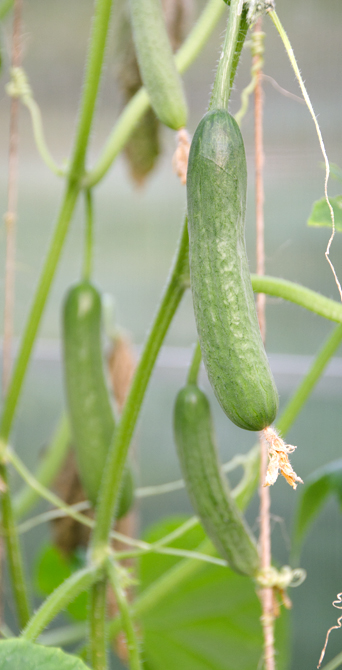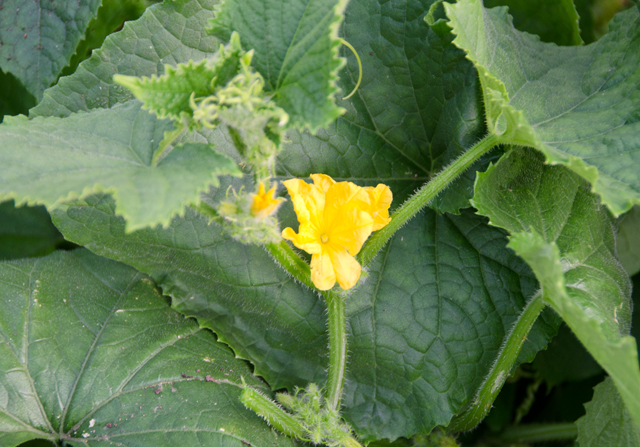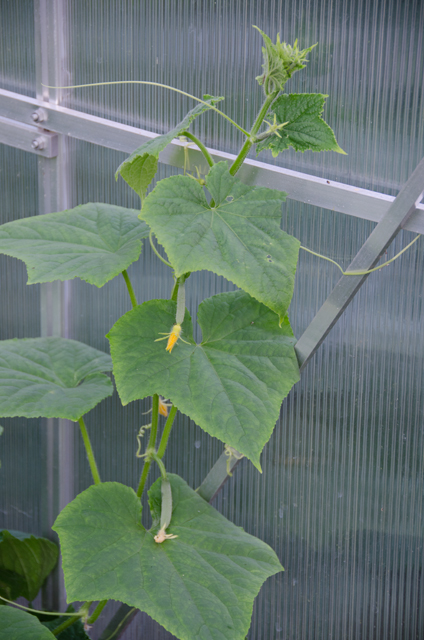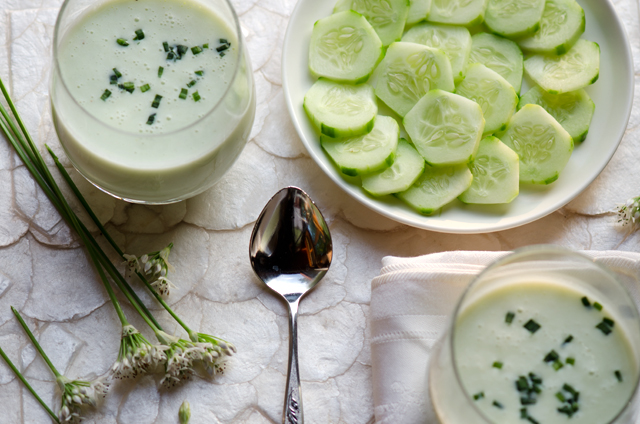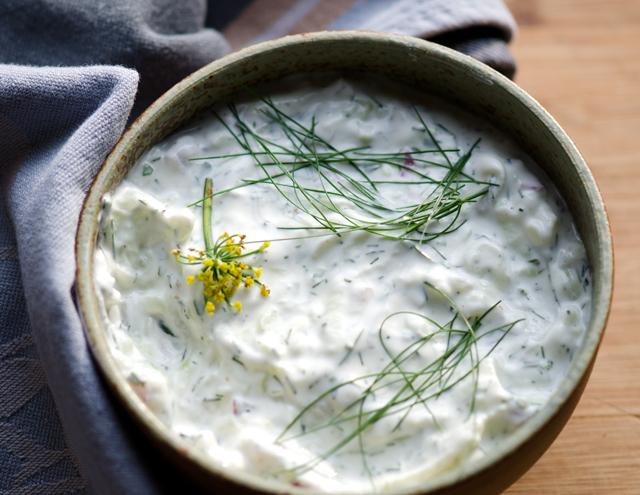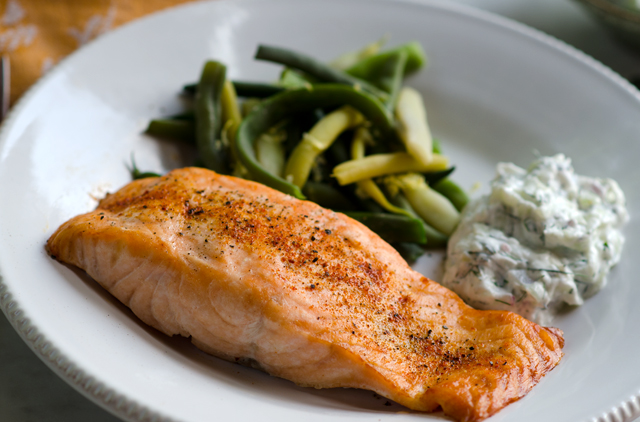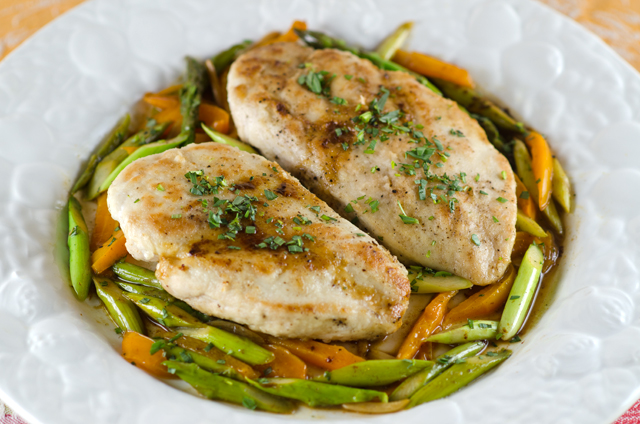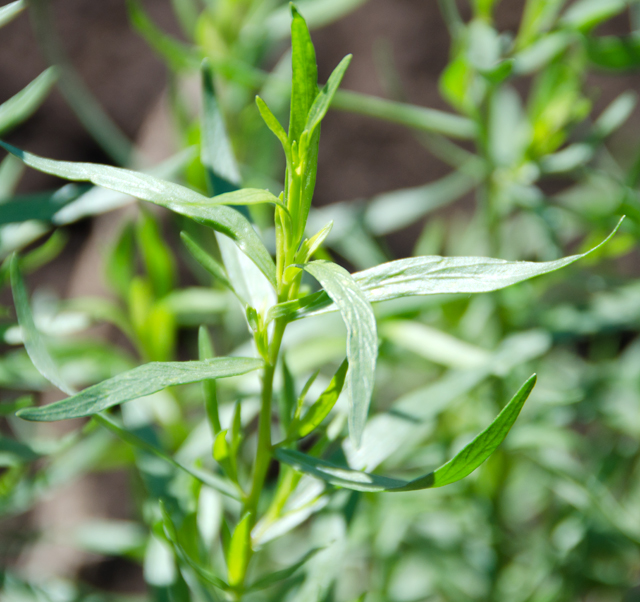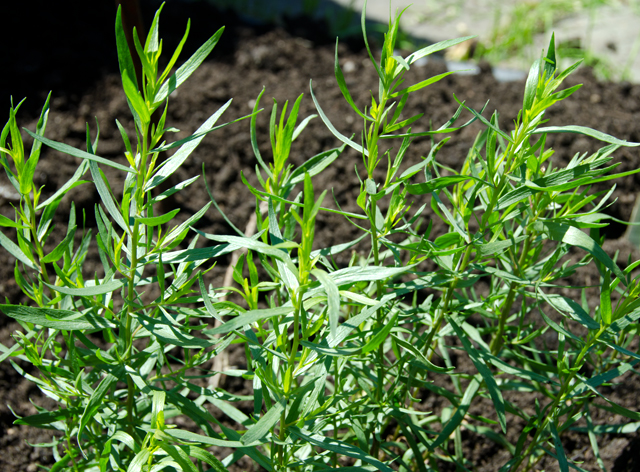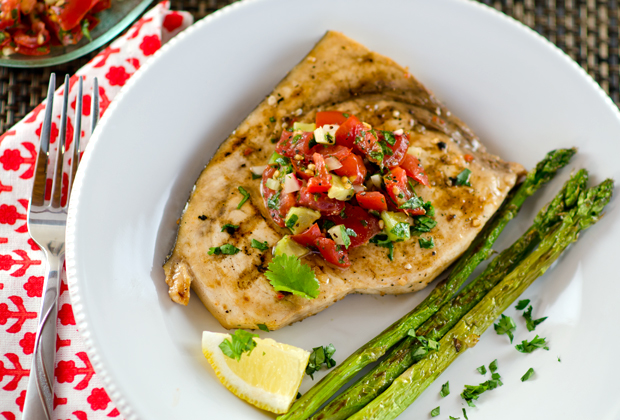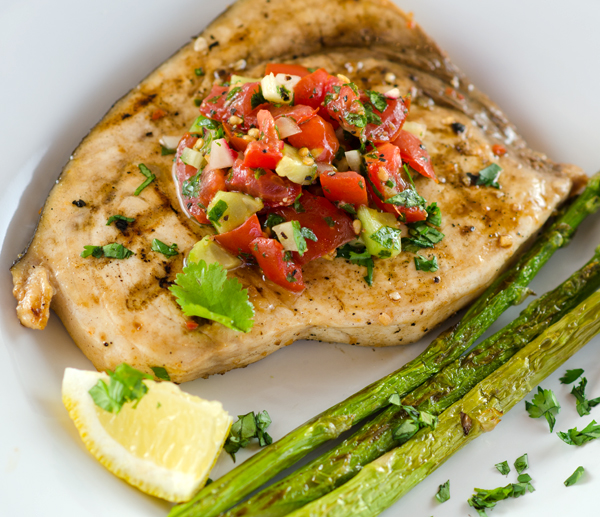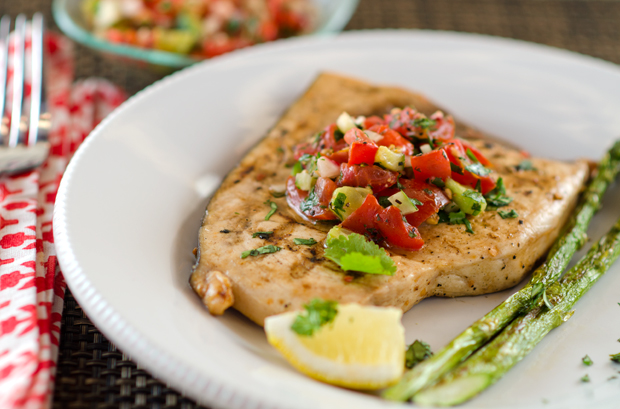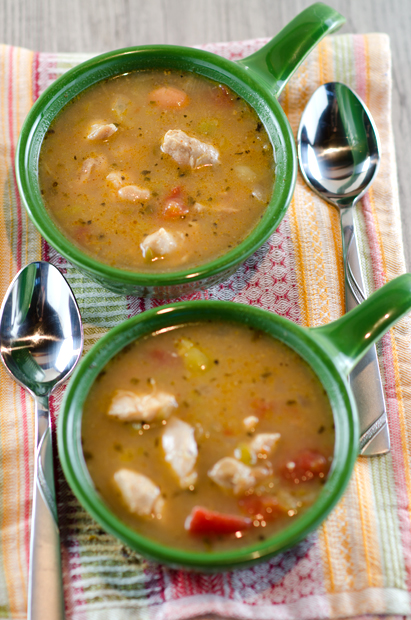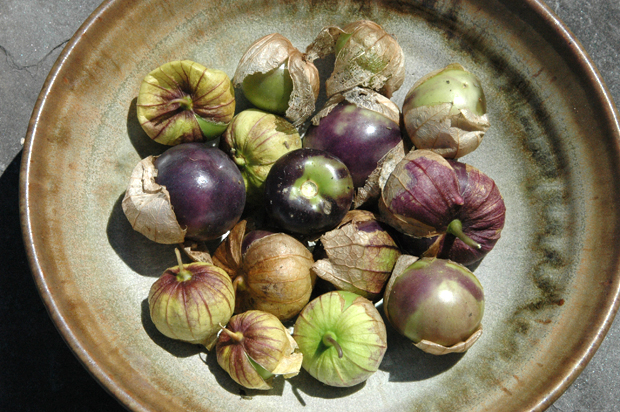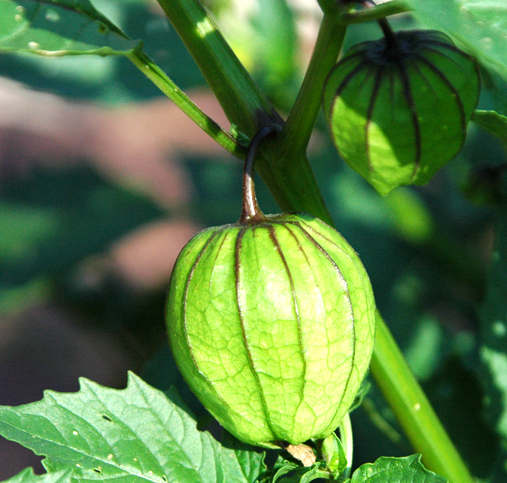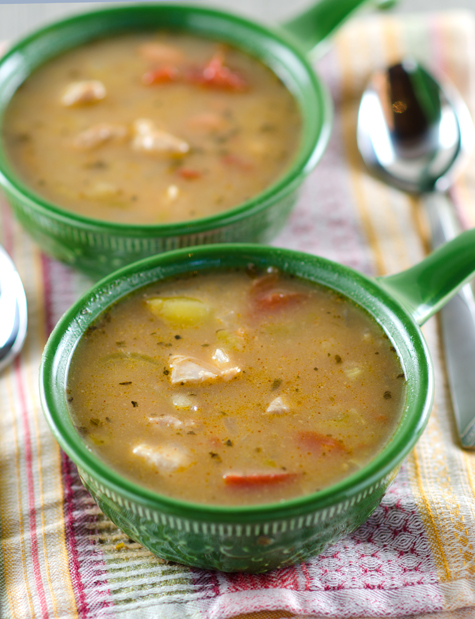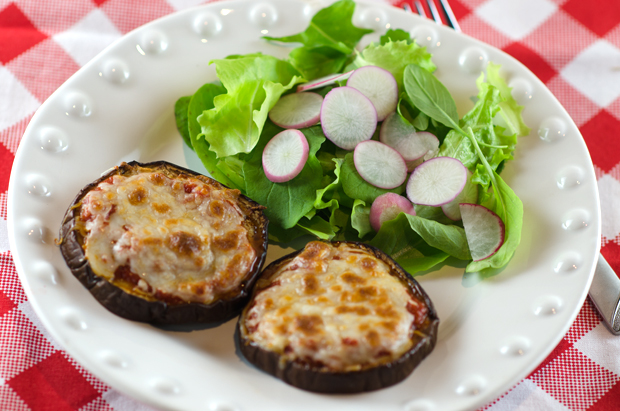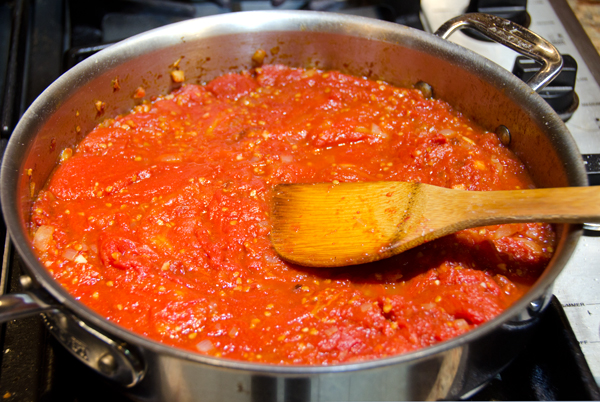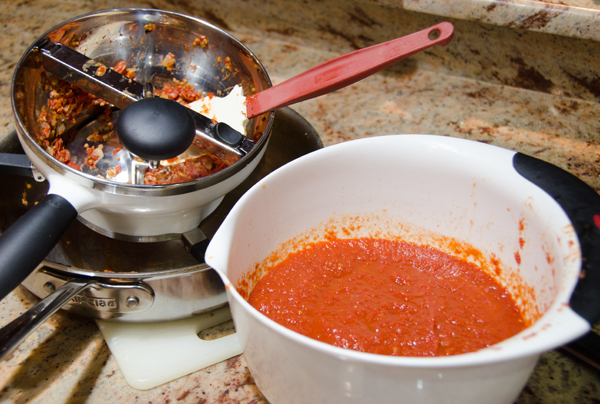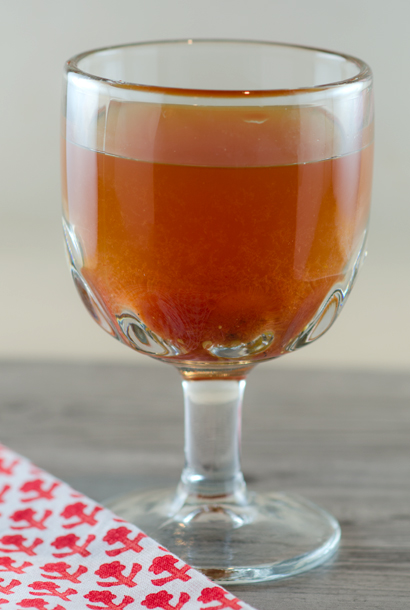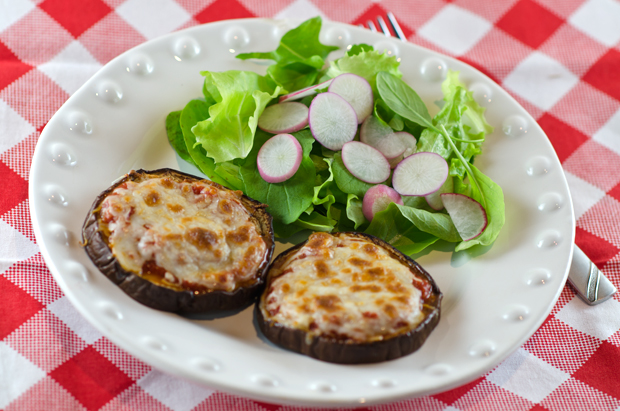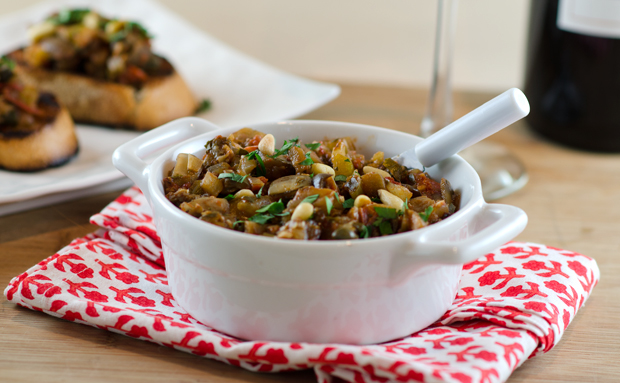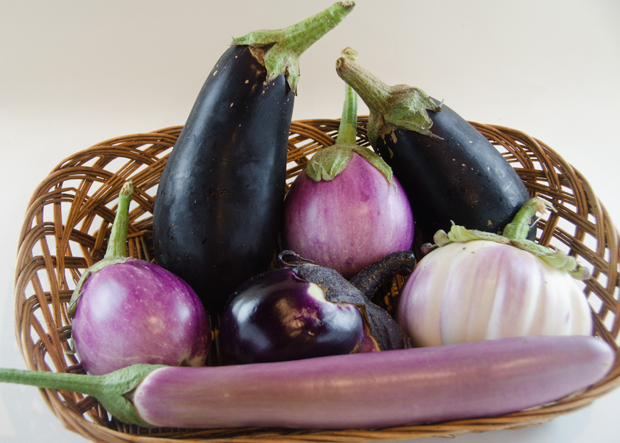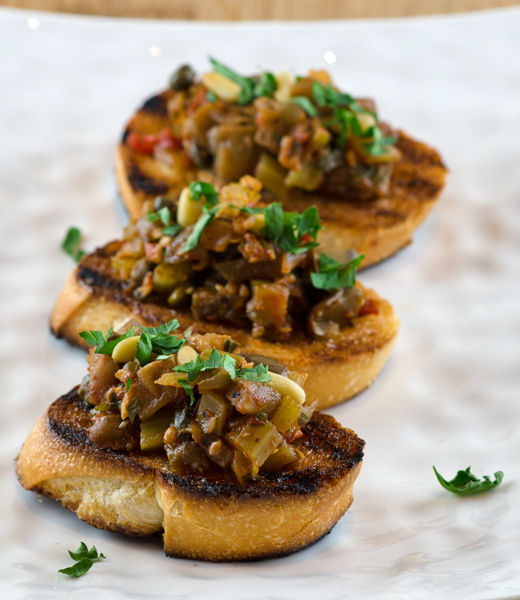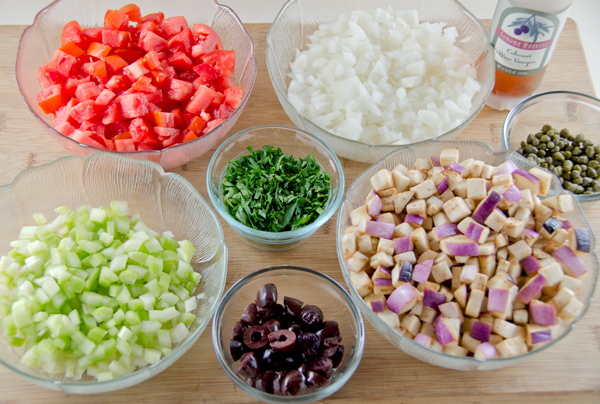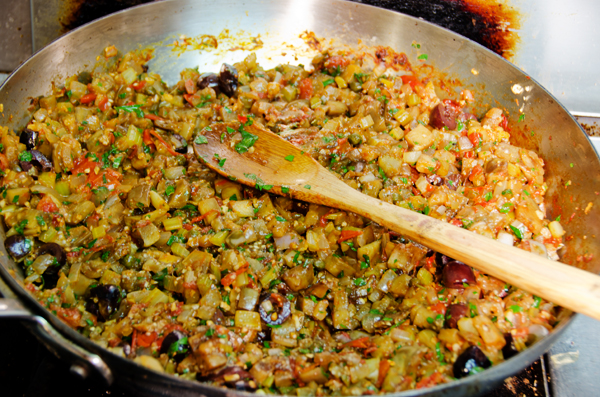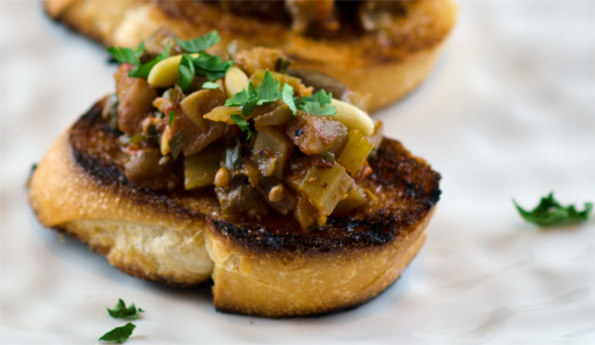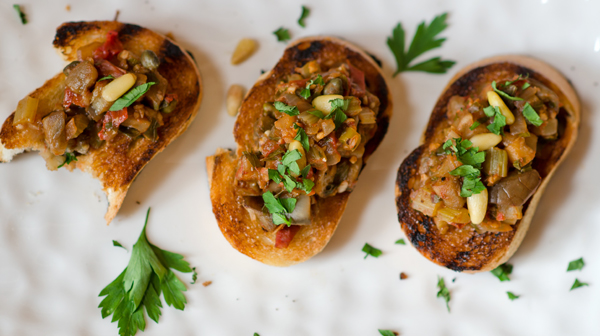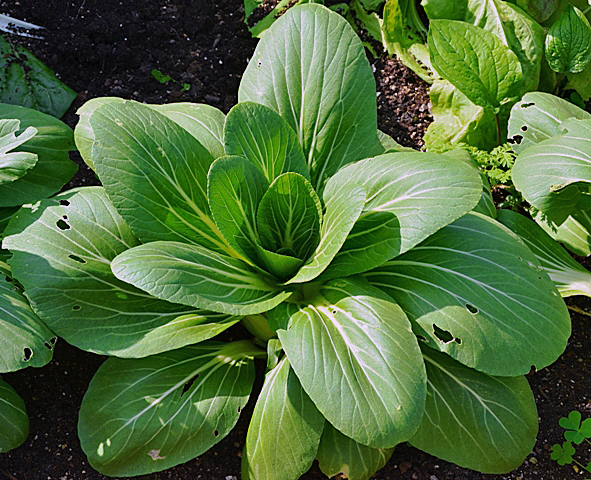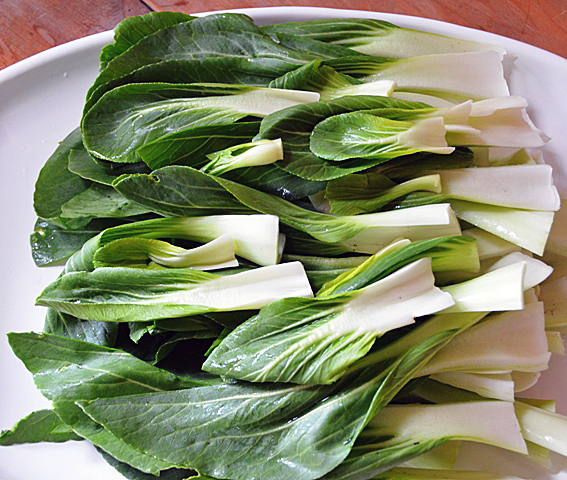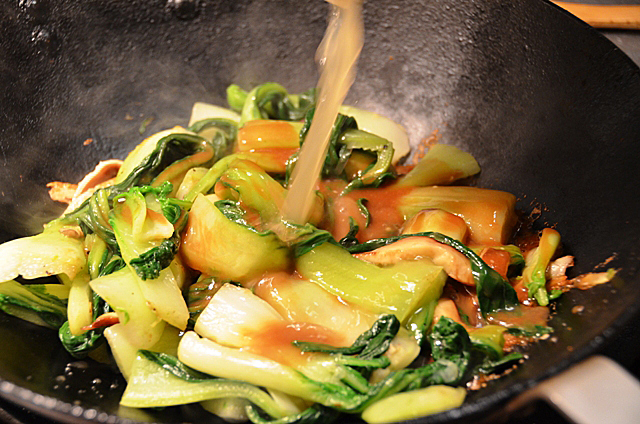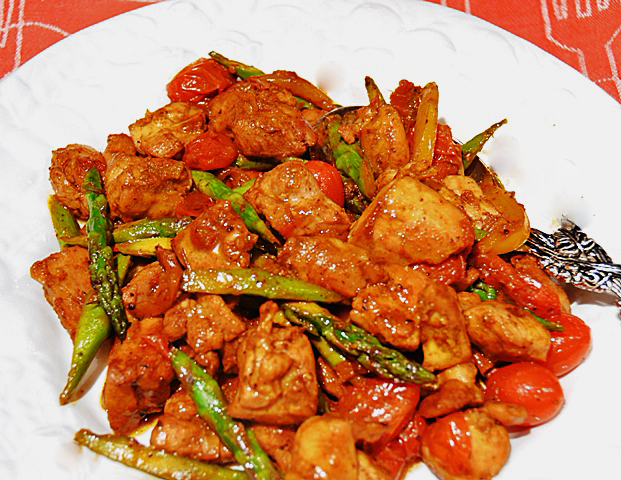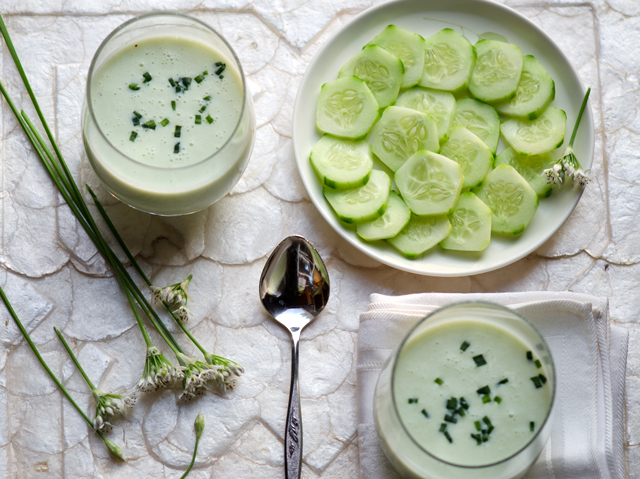 I can’t remember a year when we have had such a prolific crop of cucumbers! We are growing two varieties this year, Bush Champion and Baby Persian. The Bush Champion has a compact growing habit. Ours are in the greenhouse area of the garden but are also suitable for patio and container gardening. The Baby Persian variety is growing up a trellis in the greenhouse. The term “baby” refers to the size when it is best to pick them, 4 to 6 inches. Of course, like many cucumbers, they will continue to grow larger than this. Hence the need to be diligent in picking to get them at their best.
I can’t remember a year when we have had such a prolific crop of cucumbers! We are growing two varieties this year, Bush Champion and Baby Persian. The Bush Champion has a compact growing habit. Ours are in the greenhouse area of the garden but are also suitable for patio and container gardening. The Baby Persian variety is growing up a trellis in the greenhouse. The term “baby” refers to the size when it is best to pick them, 4 to 6 inches. Of course, like many cucumbers, they will continue to grow larger than this. Hence the need to be diligent in picking to get them at their best.
Along with tzatziki sauce, I have been making lots of cold cucumber soup. Buttermilk cucumber soup is crisp and cool from the cucumbers, celery and shallots bring depth of flavor and buttermilk and sour cream provide a refreshing tang. This no cook soup comes together in minutes, the only appliance you need is a blender.
Simply add rough chopped cucumber, celery, shallots, olive oil, buttermilk and sour cream to the bowl and blend until smooth. Force the soup through a fine strainer for the smoothest texture. Chill for at least an hour, longer if possible to blend the flavors. Add a little crabmeat or cooked shrimp for a more substantial dish. A simple garnish of chopped garlic chives and you have a cool and delicious treat for summer dining.
Chilled Buttermilk Cucumber Soup
Ingredients
- 1 1/2 lb. cucumbers, peeled, seeded, and cut into chunks
- 2 medium celery stalks, roughly chopped
- 1 small shallot, coarsely chopped
- 2T extra-virgin olive oil
- Kosher salt and freshly ground pepper
- 1/2 c sour cream (low fat is fine)
- 1/2 c buttermilk
- Freshly ground black pepper
- Chopped chives, to garnish
Directions
- In a blender, purée the cucumber, celery, shallots, olive oil, and 1 tsp. kosher salt until smooth.
- Strain through a medium-mesh sieve into a large bowl, pressing on the solids to extract as much liquid as possible.
- Whisk in the sour cream and buttermilk and season to taste with kosher salt and freshly ground black pepper. Refrigerate until chilled, at least 1 hour. Serve drizzled with olive oil and garnished with chives.
